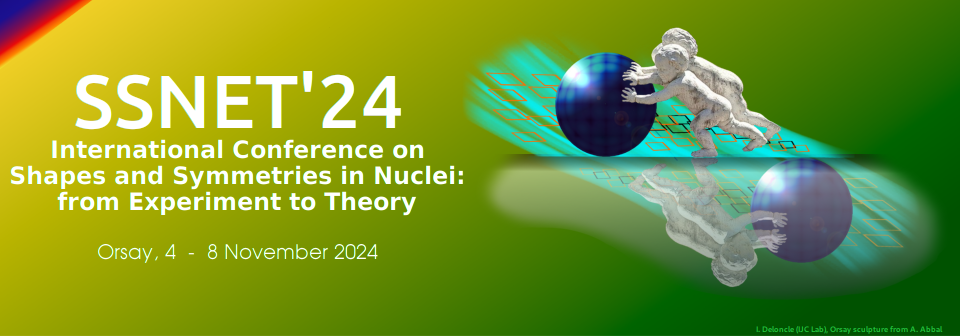Orateur
Description
One of the pillars for the study of exotic nuclides is the precise knowledge of the nuclear binding energy, which is directly and model-independently deduced from atomic-mass data. Tackling the increasing challenge to determine the mass of isotopes having low production yields and short half-lives, multi-reflection time-of-flight (MRTOF) mass spectrometry has grown from an initially rarely-used technology to the world’s most commonly-used method for measurements with a relative mass precision down to $\delta m/m = 10^{-8}$. This technology has been developed at RIKEN's RIBF facility for about two decades in combination with gas-filled ion catchers for low-energy access of isotopes produced in-flight.
In the recent past, three independent systems operating at different access points at RIBF, have provided substantial data in the medium- and heavy-mass region of the nuclear chart, reaching out to the superheavy nuclides. Recent achievements like high mass resolving power [1] followed by installations like $\alpha$/$\beta$-TOF detectors [2] and in-MRTOF ion selection have tremendously increased the selectivity of the systems, allowing for background-free identification of the rarest isotopes.
In this contribution, I will give a short overview about the success of MRTOF atomic mass measurements using BigRIPS in the recent past [3-5], and further focus on very new achievements from this year. Furthermore, the future plans for instrumentation of MRTOF devices at RIBF will be discussed with a view to the combination of established methods for decay spectroscopy and the mass selectivity provided by MRTOF-MS.
References:
[1] M. Rosenbusch et al., Nucl. Instrum. Meth. A 1047, 167824 (2023).
[2] T. Niwase et al., Theo. Exp. Phys. 2023(3), 031H01 (2023).
[3] S. Iimura et al., Phys. Rev. Lett. 130, 012501 (2023).
[4] D. S. Hou et al., Phys. Rev. C 108, 054312 (2023).
[5] W. Xian, S. Chen et al., Phys. Rev. C. 109, 035804 (2023).

